Deep in the heart of the Ironbridge Gorge, in the small village of Jackfield, you’ll find the oldest surviving tile factory in the UK.
Craven Dunnill & Co. Ltd was founded by Henry Powell Dunnill in 1872, specialising in highly decorative ceramic floor and wall tiles. 125 years later, the company is still going strong – and still operating from its purpose-built factory in Jackfield.
Image © Copyright of the Ironbridge Gorge Museum Trust.
I’m here today to meet Frances Priest, one of seven artists we’ve commissioned to produce a new artwork for Theatr Clwyd.
Frances is creating a large-scale installation for the theatre – a tiled artwork that will span over 14 metres in length – and is working with Craven Dunnill Jackfield to create the tiles.
We’re here to check on progress.
It’s a quiet scene when I arrive – the adjacent Jackfield Tile Museum is closed so there are no other visitors – but behind the doors of the weather-worn buildings around the courtyard, there’s a hive of activity.
I meet Frances and she guides me on a whistlestop tour of the site. We duck our heads beneath a low frame to say hello to the team responsible for making encaustic tiles. These decorative tiles became hugely popular during the late Victorian era, and the process of making them is still more or less the same today as it was then – painstaking, time consuming and extremely dusty. Craven Dunnill recently made 60,000 encaustic floor tiles as part of the restoration of the flooring of the House of Commons.
Elsewhere, I get a glimpse of an archive of all the different glazes that Craven Dunnill has used for projects over the years, and watch as minute detail is hand-carved into a mould.
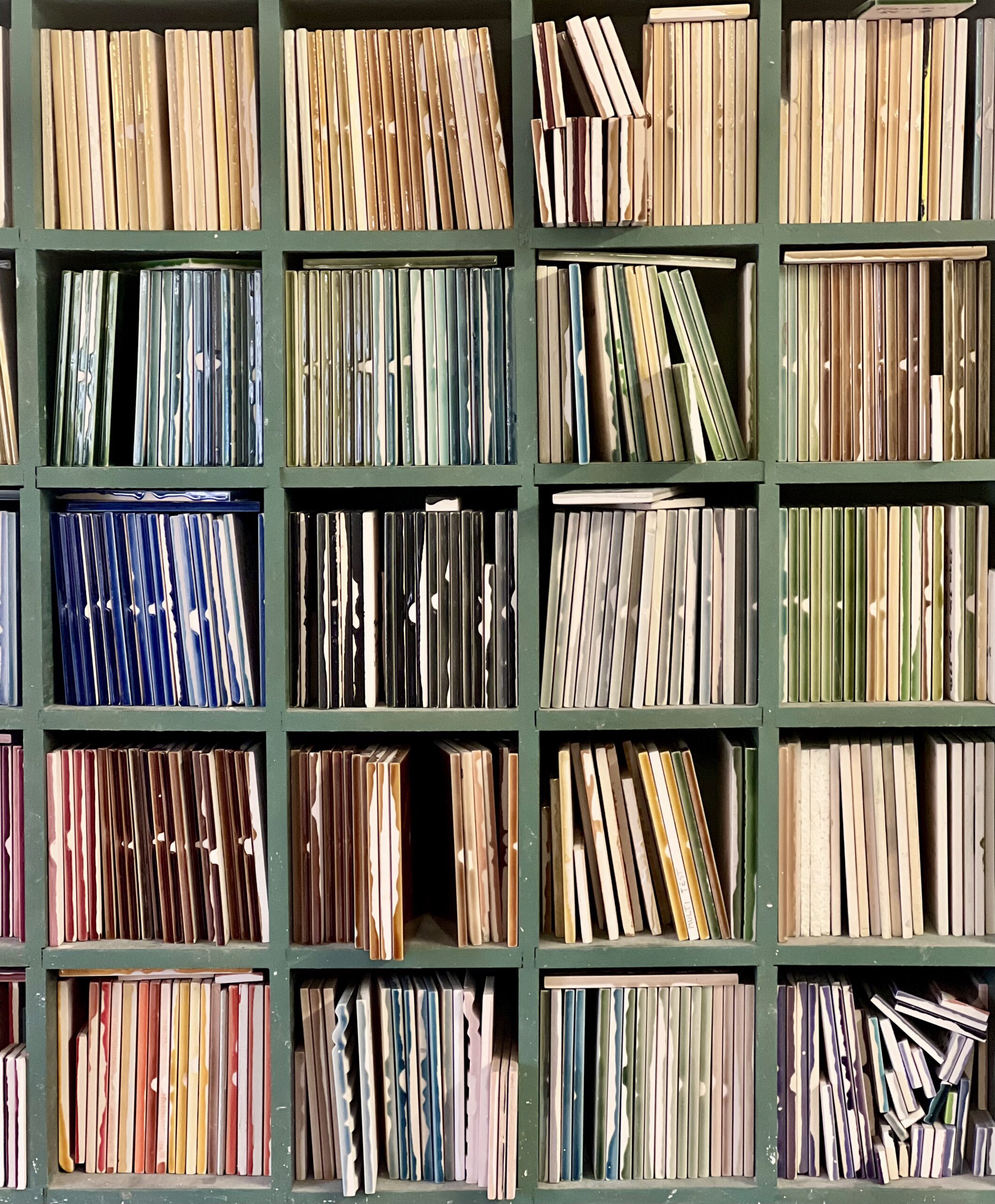
A section of Craven Dunnill Jackfield’s glaze archive
But back to the day’s main focus: Frances’ artwork. The original tile shapes were hand-carved by Frances in her Edinburgh studio. These were then passed on to the team at Craven Dunnill and a close collaboration has unfolded over the past few months.
It was such a privilege to be able to see the work in progress, to learn about how the tiles are made, and meet the talented team involved in making everything happen.
Every single tile is hand-made, and each one bears the fingerprints of a whole host of people involved in different stages of the process.
Here are some photos that give an insight into the tiles are made:
Making the tiles using a slip cast
First, clay is poured into specially made casts, based on tile shapes that have been hand-carved by Frances. Once removed from the casts, the tiles are hand-finished and fired for a first time. There are multiple shapes and sizes of tile for this artwork, including some larger motif tiles that have been inspired by the tiles in Theatr Clwyd’s main auditorium.
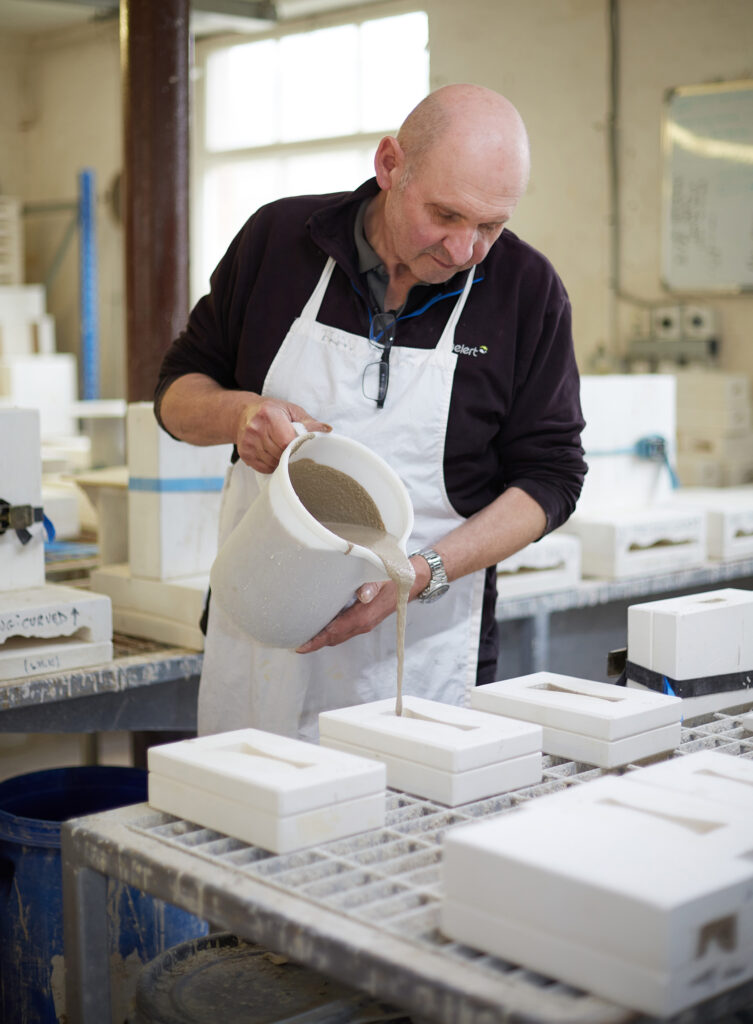
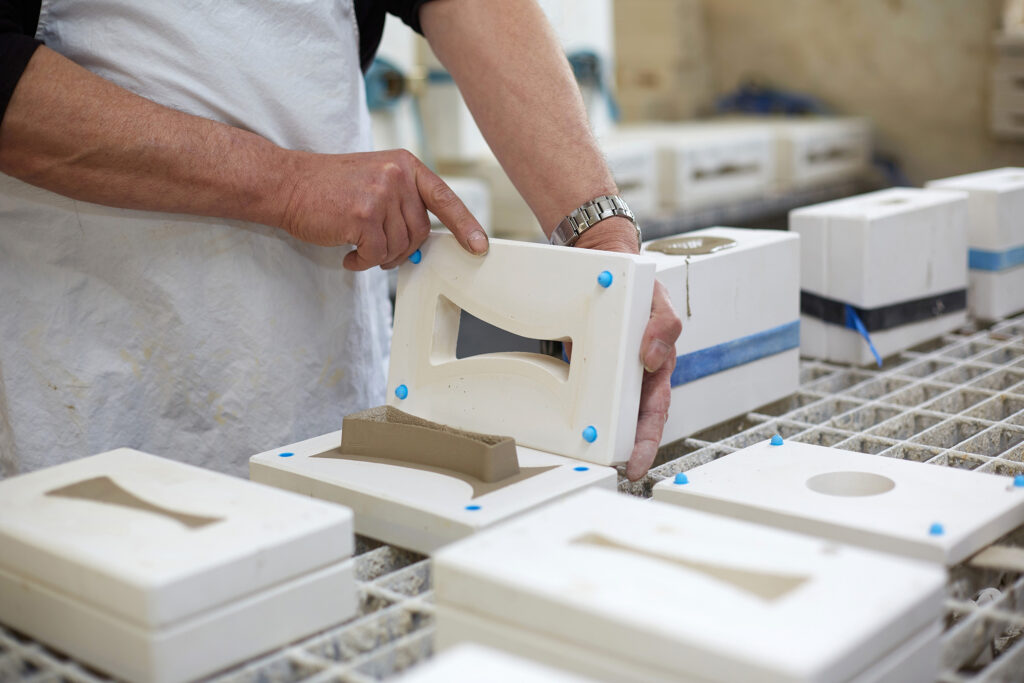

Glazing
Once the tiles have been fired, they are then glazed. Over twenty different glaze colours have been created for this project. Each tile is hand-dipped into the glaze twice, for just the right length of time, before being fired in the kiln again.
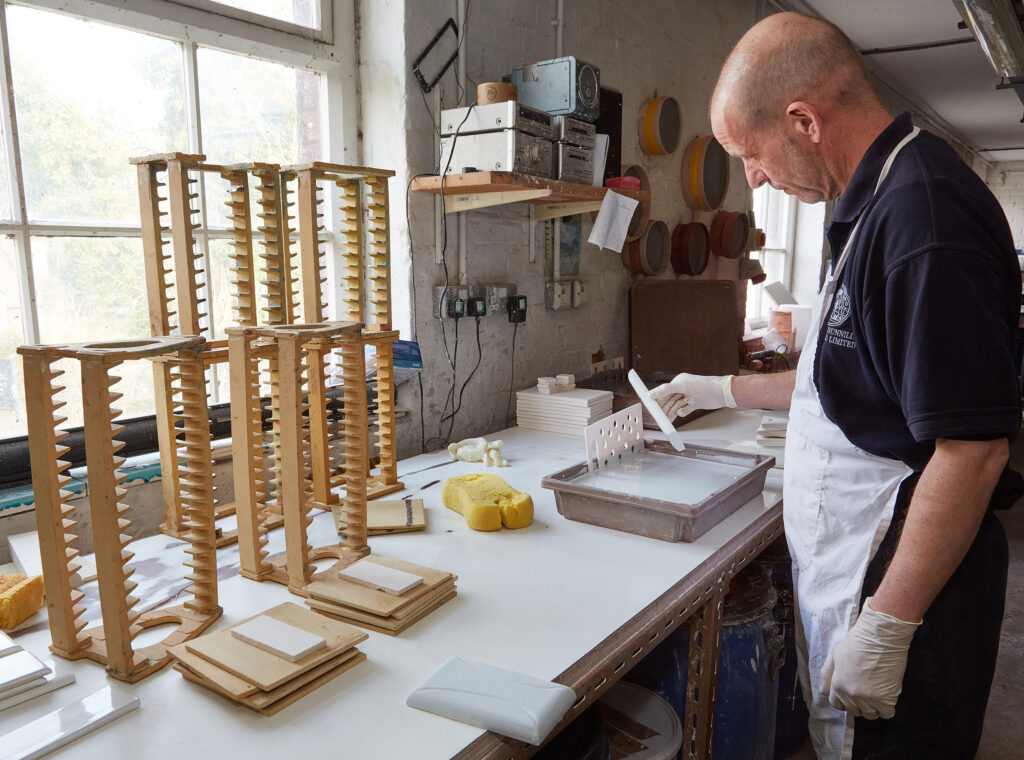
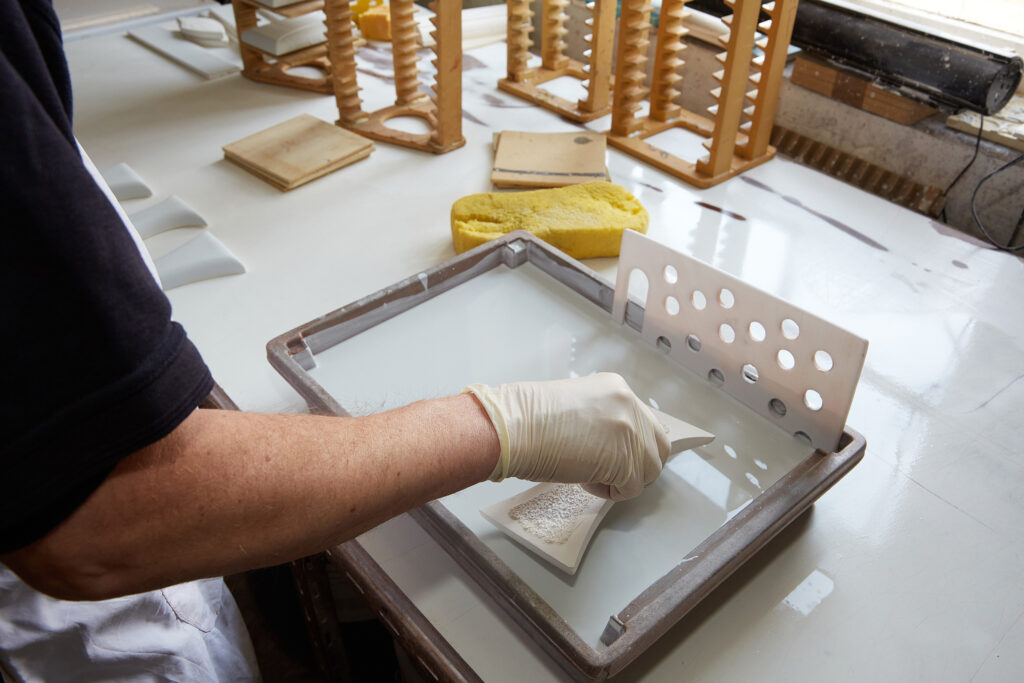
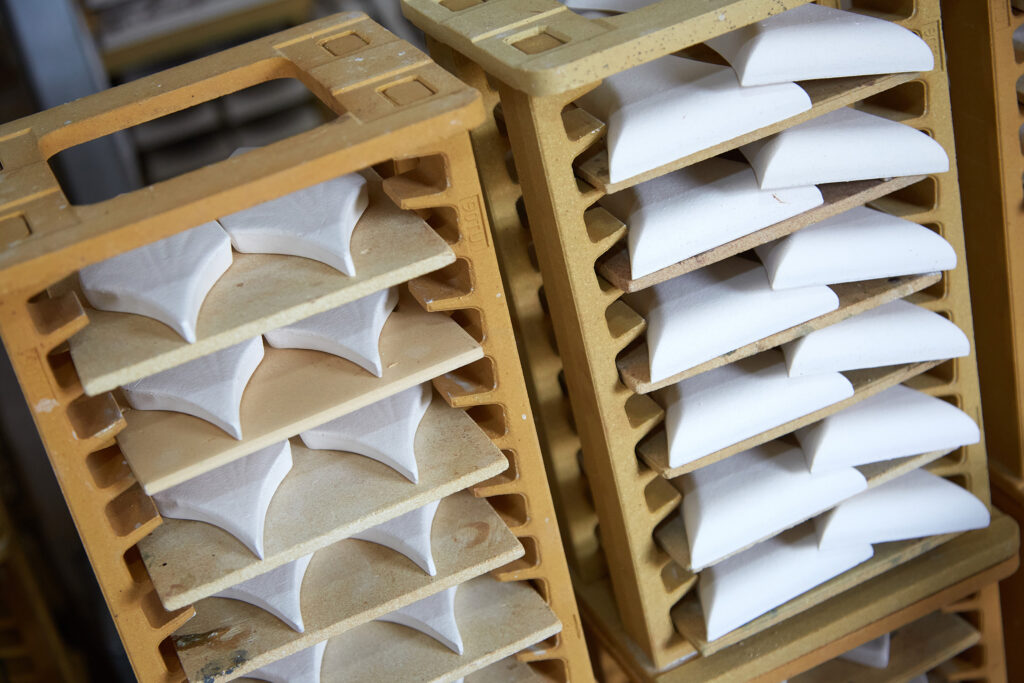
A sneak preview of the glazed tiles!
Co-ordinating the colours and packing up the tiles for delivery
The artwork is essentially a giant jigsaw puzzle, with thousands of pieces of different shapes sizes. It has taken huge amounts of careful co-ordination and planning between Frances and the team at Craven Dunnill Jackfield to plan out the production and make sure the tiles are produced according to Frances’ design.
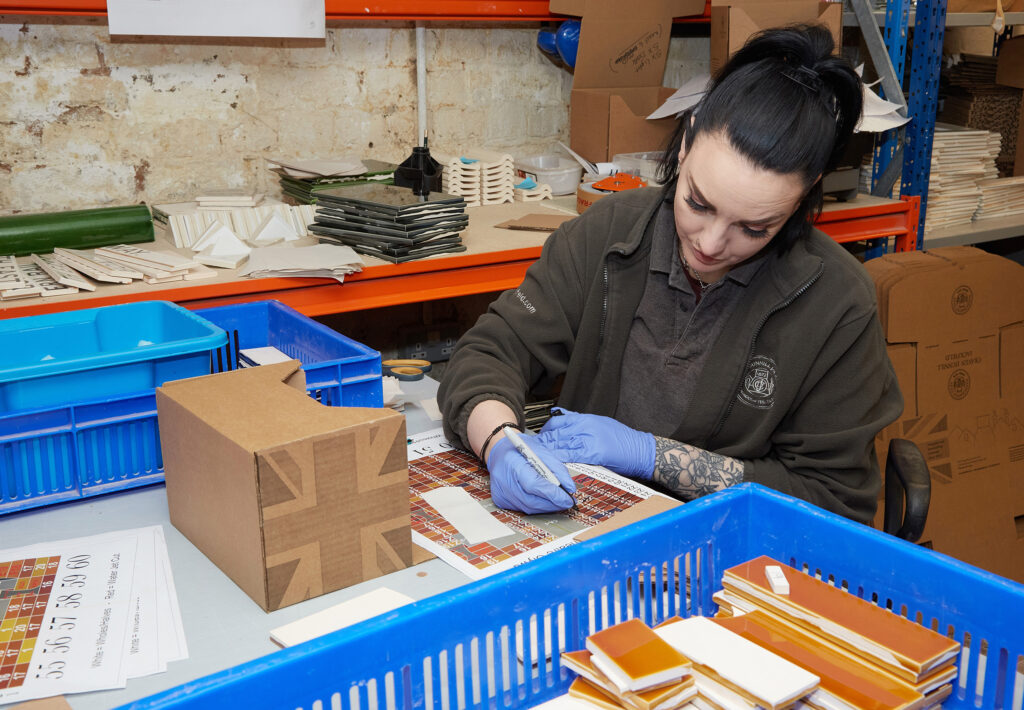
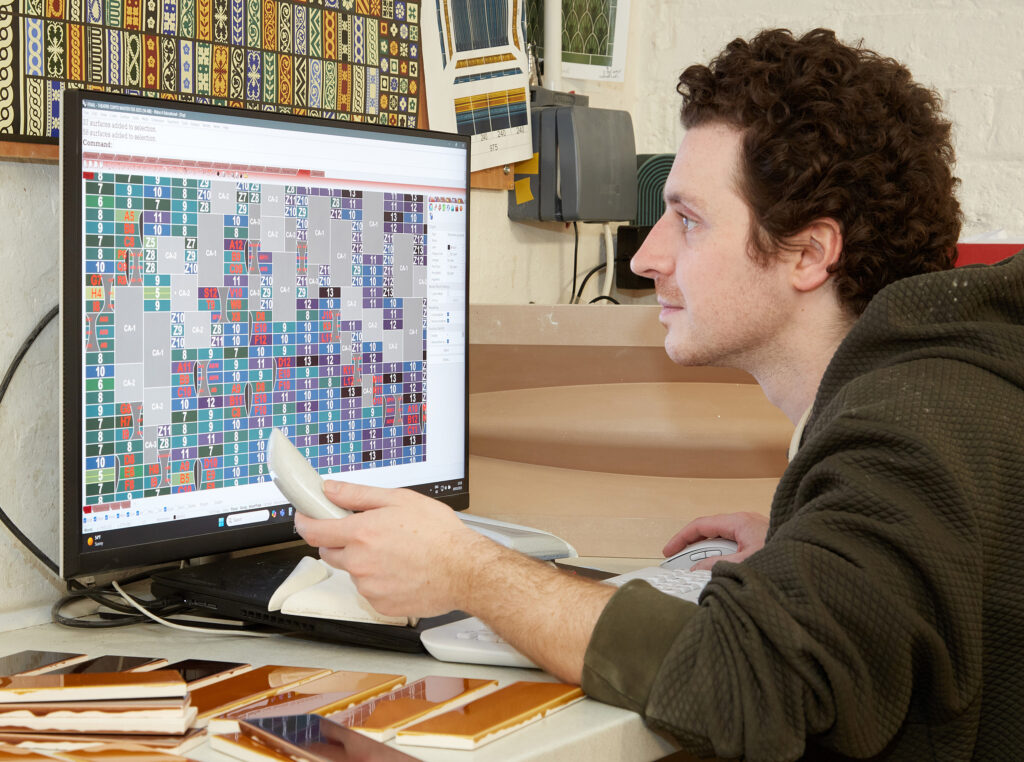
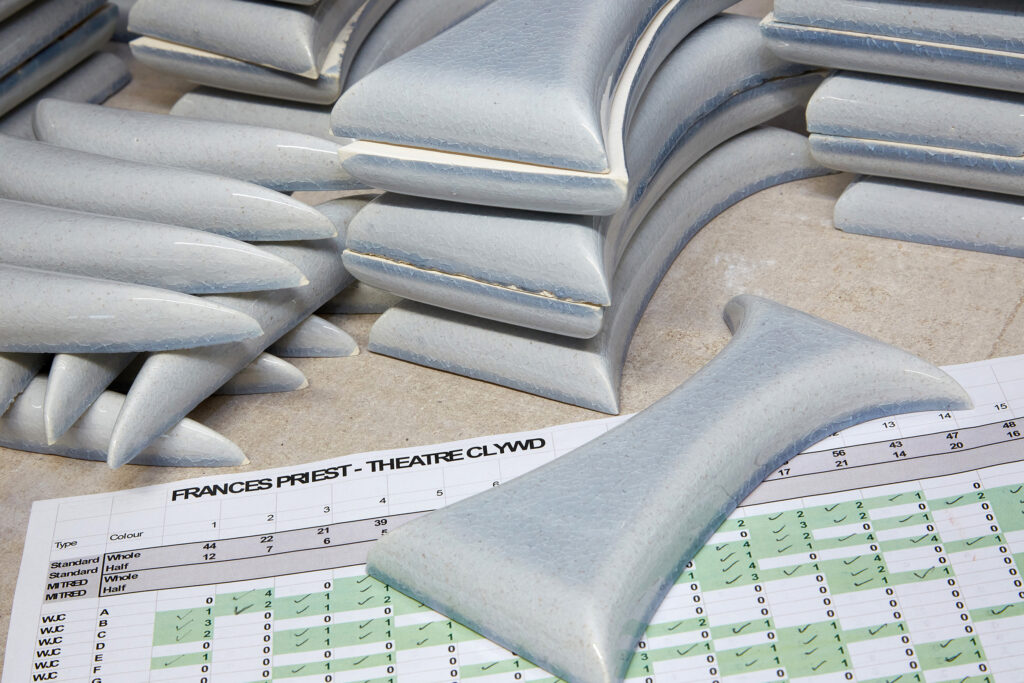
Next Steps
The tiles will soon be on their way to Theatr Clwyd, ahead of installation in May. Watch this space for more updates!